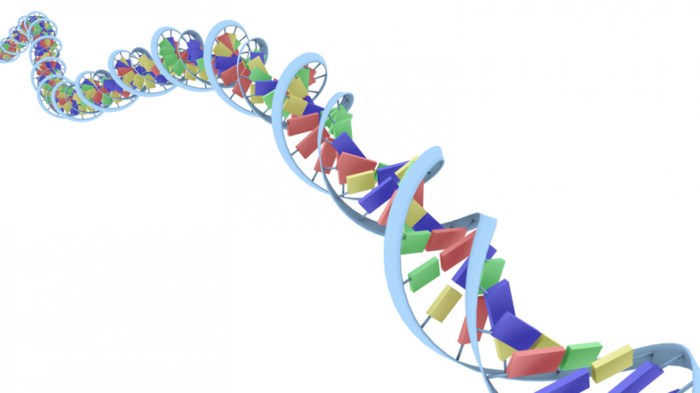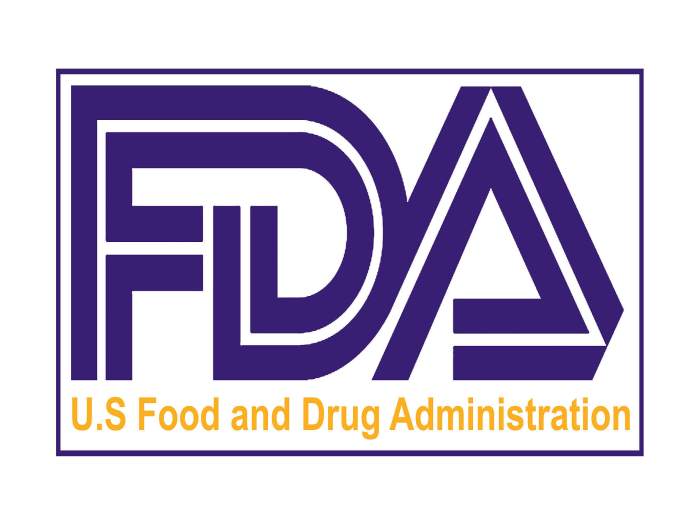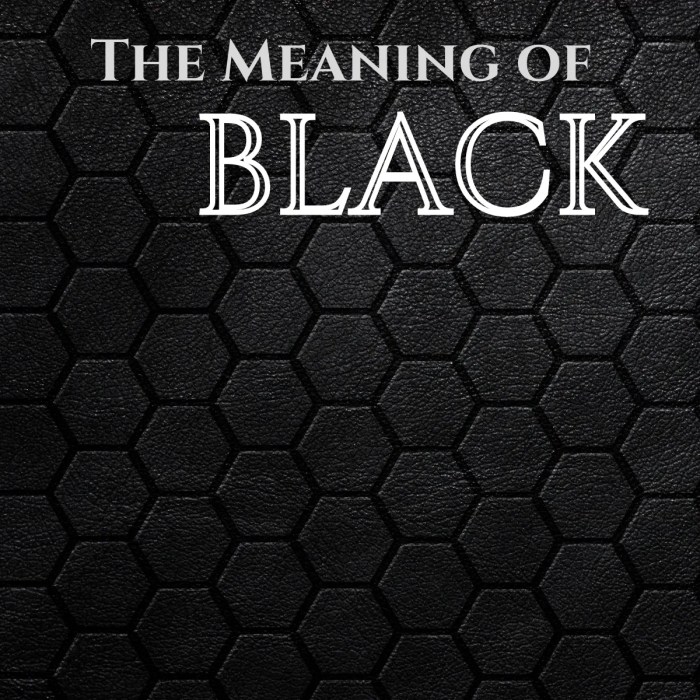The genetic theory of aging proposes that our genes play a crucial role in determining how long we live and how healthy we age. This theory delves into the intricate mechanisms through which our genetic makeup influences the aging process, examining cellular processes, specific genes, and the interplay between our genes and the environment. Understanding this complex relationship is key to unlocking potential interventions for healthier, longer lives.
This exploration examines the historical context of the theory, outlining the fundamental concepts and detailing how genes influence the aging process through cellular mechanisms like senescence and DNA damage. Further, we’ll investigate the impact of genetic pathways and environmental factors, leading to a comprehensive overview of the genetic theory of aging.
Introduction to the Genetic Theory of Aging
The genetic theory of aging posits that our genes play a crucial role in determining the rate and trajectory of the aging process. It suggests that variations in our genetic makeup can influence how quickly we age, the diseases we’re susceptible to in later life, and even our overall lifespan. This theory acknowledges that aging isn’t a simple, uniform process but rather a complex interplay of genetic predispositions and environmental factors.The fundamental concepts underpinning this theory revolve around the idea that certain genes can either accelerate or decelerate the aging process.
This concept is explored through various mechanisms, including the accumulation of cellular damage, the gradual decline of cellular function, and the impact of specific genes on the expression of cellular processes. The historical context of the theory’s development includes early observations of familial longevity and the increasing understanding of the intricate relationship between genetics and health throughout life.
Historical Context of the Theory
The genetic theory of aging has roots in the observation that some families exhibit significantly longer lifespans than others. Early researchers recognized the potential influence of heredity on lifespan. Further development of the theory was intertwined with advancements in molecular biology and genetics. The discovery of DNA’s structure, the development of techniques for analyzing genes, and the understanding of cellular mechanisms have all contributed to a more nuanced understanding of aging’s genetic underpinnings.
These developments allowed scientists to pinpoint specific genes and pathways implicated in the aging process.
Genes and the Aging Process
Genes influence aging through a variety of mechanisms. Some genes directly code for proteins involved in cellular repair and maintenance. Mutations in these genes can lead to reduced repair capacity, accelerating the accumulation of cellular damage and the onset of age-related diseases. Other genes regulate the expression of genes related to cellular processes, affecting the efficiency of these processes as we age.
Still other genes can affect cellular senescence, the process where cells stop dividing. The influence of these genes is not isolated; they interact in complex ways, creating a network of genetic factors that contribute to the aging process.
Different Ways Genes Influence Aging
- Cellular Repair and Maintenance: Genes involved in DNA repair, protein folding, and cellular waste removal are essential for maintaining cellular integrity. Variations in these genes can lead to reduced efficiency in these processes, increasing the accumulation of cellular damage, which is a hallmark of aging.
- Cellular Senescence: Certain genes control the process of cellular senescence, where cells stop dividing. Variations in these genes can lead to either premature or delayed senescence, potentially impacting the aging process.
- Oxidative Stress: Genes influence the body’s antioxidant defenses, combating the damaging effects of reactive oxygen species. Variations in these genes can affect the efficiency of this defense system, contributing to the accumulation of oxidative stress, a significant contributor to aging.
Comparative Analysis of Genetic Factors
| Genetic Factor | Impact on Aging | Example |
|---|---|---|
| Telomere shortening | Associated with cellular aging and DNA damage; contributes to decreased cellular function | Individuals with shorter telomeres may experience age-related health problems sooner. |
| Oxidative stress response genes | Influence the body’s ability to combat damaging reactive oxygen species; impacts cellular damage | Variations in antioxidant enzyme genes can affect the rate of oxidative stress accumulation. |
| Cellular repair mechanisms | Crucial for maintaining cellular integrity; variations can accelerate age-related damage | Mutations in DNA repair genes can lead to the accumulation of mutations and cellular damage. |
| Inflammation-related genes | Chronic inflammation is linked to age-related diseases; variations can affect the inflammatory response. | Genes controlling inflammatory pathways are implicated in many age-related diseases. |
Cellular Mechanisms and Aging
The intricate dance of life, from birth to death, is governed by a complex interplay of genetic and environmental factors. Cellular mechanisms play a pivotal role in this process, and understanding their involvement in aging is crucial to developing interventions that could potentially extend lifespan and healthspan. Genetic factors influence the efficiency of these mechanisms, contributing to the observed variability in aging trajectories among individuals.Cellular senescence, DNA damage, telomere shortening, and oxidative stress are key cellular processes affected by genetics, impacting the overall aging process.
These factors interact in a multifaceted way, and their cumulative effect can lead to the decline in cellular function and organismal health observed with advancing age. Disruptions in these processes can lead to age-related diseases and reduced overall lifespan.
Cellular Senescence in Aging
Cellular senescence is a state of irreversible cell cycle arrest. This process is triggered by various stressors, including DNA damage, telomere attrition, and oncogene activation. Senescent cells accumulate in tissues with age, and these cells release a variety of factors that can damage surrounding healthy cells and contribute to the decline in tissue function. The accumulation of these factors contributes to age-related diseases and tissue dysfunction.
For instance, senescent cells in the heart can contribute to cardiac dysfunction and fibrosis, leading to conditions like heart failure.
Impact of DNA Damage on Cellular Aging
DNA damage is an inevitable consequence of cellular metabolism and environmental exposures. The accumulation of DNA damage over time leads to a decline in cellular function and increased risk of various age-related diseases. Errors in DNA repair mechanisms and the effectiveness of cellular protection mechanisms against damage are key determinants in how the accumulation of DNA damage influences aging.
For example, exposure to ultraviolet radiation can cause significant DNA damage, leading to premature aging and skin cancer risk.
Role of Telomeres in the Aging Process
Telomeres are protective caps at the ends of chromosomes. Each time a cell divides, the telomeres shorten, eventually reaching a critical length that triggers cellular senescence. The rate of telomere shortening varies among individuals and can be influenced by genetic factors, lifestyle choices, and environmental exposures. Individuals with faster telomere shortening rates may exhibit accelerated aging and increased susceptibility to age-related diseases.
Involvement of Oxidative Stress in Genetic Aging
Oxidative stress, arising from an imbalance between reactive oxygen species (ROS) production and antioxidant defenses, plays a significant role in cellular aging. ROS can damage cellular components, including DNA, proteins, and lipids, leading to dysfunction and cellular senescence. Genetic variations can influence the efficiency of antioxidant defense mechanisms, impacting the level of oxidative stress and, consequently, the aging process.
For example, individuals with genetic predispositions to lower antioxidant capacity might be more susceptible to age-related diseases.
Summary of Cellular Mechanisms Influenced by Genetic Factors
| Cellular Mechanism | Impact on Aging | Genetic Influence |
|---|---|---|
| Cellular Senescence | Accumulation leads to tissue dysfunction | Genetic predisposition to senescence triggers |
| DNA Damage | Accumulation leads to cellular dysfunction | Efficiency of repair mechanisms |
| Telomere Shortening | Triggers cellular senescence, reduced cell division | Rate of shortening varies based on genetics |
| Oxidative Stress | Damages cellular components, promotes aging | Efficiency of antioxidant defense |
Genetic Pathways and Aging
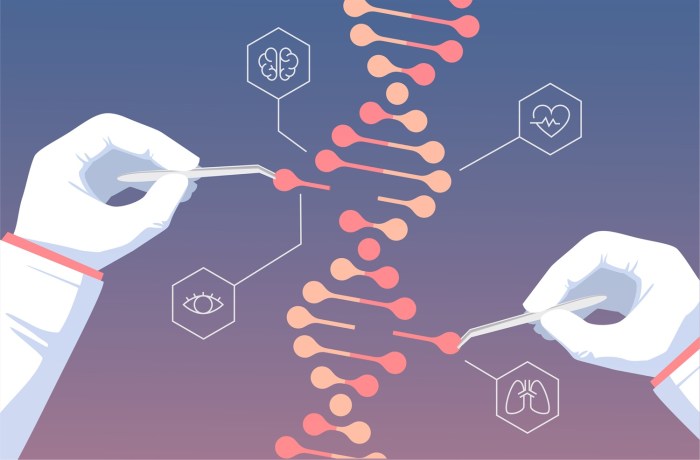
The genetic landscape plays a crucial role in determining an organism’s lifespan and healthspan. Understanding the specific genes and pathways involved in aging is vital for developing strategies to combat age-related diseases and enhance human longevity. Genetic variations can influence how efficiently our bodies repair cellular damage, respond to stress, and maintain homeostasis, ultimately impacting the rate of aging.
This section delves into the significant genes, mutations, and pathways connected to the aging process.
Specific Genes Associated with Aging
Many genes have been implicated in the aging process, each contributing to various aspects of cellular function and organismal health. Some genes, like those involved in DNA repair mechanisms, are particularly crucial for maintaining genomic stability and preventing cellular damage that accumulates with age. Other genes influence cellular signaling pathways, metabolism, and stress responses, all of which are vital components of the aging process.
Impact of Gene Mutations on Lifespan and Healthspan
Mutations in genes associated with aging can significantly impact an individual’s lifespan and healthspan. Mutations can lead to reduced function or complete loss of function of the encoded proteins. These functional alterations can result in an increased susceptibility to age-related diseases, such as cancer, cardiovascular disease, and neurodegenerative disorders. Examples include mutations in genes involved in DNA repair, telomere maintenance, and cellular senescence.
These alterations can lead to the accumulation of cellular damage, impaired cellular function, and ultimately, accelerated aging.
Overview of Genetic Pathways Contributing to Aging
Numerous genetic pathways contribute to the complex aging process. These pathways are interconnected and often influence multiple cellular processes. They encompass various cellular functions such as DNA repair, telomere maintenance, cellular senescence, and stress responses. These pathways can be affected by genetic variations, environmental factors, and lifestyle choices, all contributing to the diversity of aging patterns among individuals.
Genetic Pathways Implicated in Age-Related Diseases
Certain genetic pathways are strongly linked to the development of specific age-related diseases. For instance, mutations in genes involved in the insulin/IGF-1 signaling pathway have been associated with increased susceptibility to type 2 diabetes and other age-related metabolic disorders. Furthermore, defects in pathways related to mitochondrial function can contribute to the development of neurodegenerative diseases like Alzheimer’s and Parkinson’s disease.
Mutations in genes controlling the inflammatory response can also lead to age-related inflammatory diseases.
Table: Genetic Pathways and Aging
| Genetic Pathway | Connection to Aging | Examples of Age-Related Diseases |
|---|---|---|
| Insulin/IGF-1 Signaling (IIS) | Dysregulation of IIS can lead to metabolic dysfunction and accelerated aging. | Type 2 diabetes, cardiovascular disease, cancer |
| DNA Repair Pathways | Defects in DNA repair mechanisms result in accumulation of DNA damage and genomic instability. | Cancer, neurodegenerative diseases |
| Telomere Maintenance | Shortening of telomeres is associated with cellular senescence and aging. | Various age-related diseases, including cardiovascular disease and cancer |
| Cellular Senescence | Accumulation of senescent cells can contribute to inflammation and tissue dysfunction. | Age-related inflammation, osteoarthritis |
| Mitochondrial Function | Impaired mitochondrial function leads to reduced energy production and oxidative stress. | Neurodegenerative diseases (Alzheimer’s, Parkinson’s), muscle atrophy |
Environmental Influences on Genetic Aging
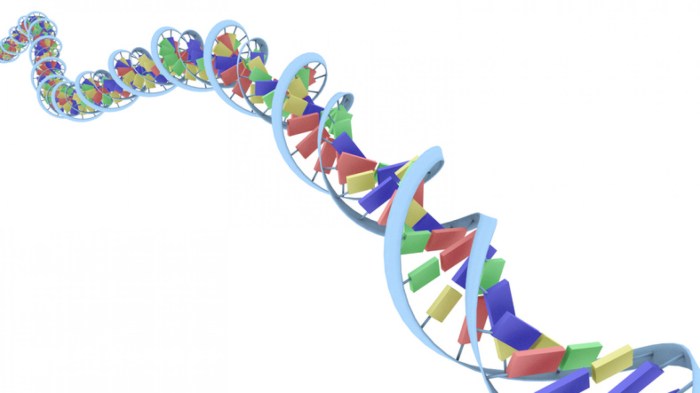
The intricate dance between our genes and the environment shapes our aging trajectory. While our genetic blueprint provides a predisposition, external factors significantly influence how those genes are expressed and, consequently, the pace and nature of aging. Understanding this interplay is crucial for developing preventative strategies and personalized approaches to healthy aging.
Lifestyle Choices and Gene Expression
Lifestyle choices exert a powerful influence on the expression of genes related to aging. Diet, exercise, stress levels, and exposure to toxins all contribute to modulating gene activity. For instance, a healthy diet rich in antioxidants and micronutrients can potentially mitigate the effects of oxidative stress, a key contributor to cellular damage associated with aging. Conversely, a diet high in processed foods and saturated fats can accelerate the aging process.
Impact of Diet on Genetic Aging
Diet plays a pivotal role in modulating the expression of genes related to aging. Nutrients like antioxidants, vitamins, and minerals are essential for cellular repair and protection against damage. A diet rich in fruits, vegetables, and whole grains provides these vital nutrients. Conversely, diets high in saturated fats and processed foods can lead to increased inflammation and oxidative stress, potentially accelerating the aging process.
Specific dietary patterns, such as the Mediterranean diet, have been linked to slower rates of aging in numerous studies. This diet emphasizes fruits, vegetables, whole grains, and healthy fats, providing a wealth of nutrients that support cellular health.
Impact of Exercise on Genetic Aging
Exercise is not only beneficial for physical health but also impacts the expression of genes involved in the aging process. Regular physical activity can improve cellular function, reduce inflammation, and enhance the body’s ability to repair damaged tissues. Exercise can also influence the expression of genes related to stress response and cellular repair, which may contribute to a healthier aging process.
The type and intensity of exercise should be tailored to individual needs and preferences, aiming for a balance that promotes overall well-being.
Environmental Factors and Aging Rate
Environmental factors, beyond lifestyle choices, significantly influence the rate of aging. Exposure to pollutants, toxins, and stress can accelerate cellular damage and accelerate the aging process. Air pollution, for example, has been linked to accelerated telomere shortening, a hallmark of aging. Social factors such as social isolation and lack of support networks also have a profound impact.
Conversely, access to quality healthcare, social support, and a safe environment can foster a healthier aging trajectory.
Table: Interaction Between Genetic Predisposition and Environmental Factors in Aging
| Genetic Predisposition | Environmental Factor | Potential Impact on Aging |
|---|---|---|
| Increased risk of cardiovascular disease | High-fat diet | Increased risk of premature aging, accelerated cardiovascular decline |
| Susceptibility to oxidative stress | Exposure to air pollution | Accelerated cellular damage, faster rate of aging |
| Inherited predisposition to muscle loss | Sedentary lifestyle | Accelerated sarcopenia (muscle loss), reduced functional capacity |
| Genetic predisposition to neurodegenerative diseases | Chronic stress | Potentially increased risk and accelerated progression of neurodegenerative diseases |
| Strong family history of Alzheimer’s | Healthy diet and regular exercise | Potential mitigation of the risk and delayed onset of Alzheimer’s |
Interventions and Future Directions
The quest to understand and potentially reverse aging has spurred intense research into the intricate interplay of genes and environment. This exploration delves into the exciting realm of interventions, examining existing efforts and potential future strategies to slow or even reverse the aging process. The potential for personalized interventions based on genetic profiles is particularly compelling, promising a tailored approach to health and longevity.Genetic research offers a unique window into the mechanisms driving aging, and this understanding is crucial for developing targeted interventions.
The potential for personalized medicine is significant, with the prospect of predicting individual aging trajectories and tailoring interventions to specific genetic predispositions. However, ethical considerations surrounding gene manipulation must be carefully addressed, ensuring responsible and equitable application of these powerful technologies.
The genetic theory of aging suggests our DNA plays a huge role in how we age, influencing everything from our cellular repair mechanisms to our susceptibility to disease. But what about lifestyle factors like diet? Understanding the interplay between genetics and diet is crucial, especially when considering conditions like food allergy vs intolerance. Food allergy vs intolerance can significantly impact someone’s overall health, potentially affecting the very cellular processes that determine the aging process.
Ultimately, a deeper understanding of these interconnected factors is key to managing our health throughout our lives.
Existing Research Exploring Interventions
Research into interventions to slow or reverse aging is diverse and often involves multiple approaches. Some studies focus on dietary interventions, such as caloric restriction, demonstrating a link between reduced calorie intake and extended lifespan in various organisms. Others explore pharmacological interventions, testing compounds that might target specific cellular pathways associated with aging. These include research into senescent cell removal, exploring the role of cellular senescence in the aging process.
Further, research into telomere maintenance is actively investigated, exploring how to prevent or reverse the shortening of these protective caps at the ends of chromosomes.
Personalized Aging Interventions
Personalized interventions, tailored to an individual’s genetic profile, represent a promising future direction. This approach involves analyzing an individual’s genetic makeup to identify potential predispositions to age-related diseases. Knowledge of specific genetic variations associated with accelerated aging could then inform strategies for preventative or therapeutic interventions. This approach could potentially reduce the risk of age-related diseases and extend healthy lifespan.
Ethical Considerations of Gene Manipulation
The prospect of manipulating genes to influence aging raises profound ethical concerns. One key consideration is the potential for unintended consequences of altering the genetic code. Moreover, equitable access to these potentially transformative interventions is critical. Ensuring that these interventions are available to all segments of society, regardless of socioeconomic status, is paramount. Concerns regarding germline modification, altering the genetic code that will be passed on to future generations, further complicate the discussion.
Potential Strategies for Manipulating Genetic Factors in Aging
Various strategies could be employed to manipulate genetic factors involved in aging. These include targeted gene therapies, aimed at correcting specific genetic defects associated with accelerated aging. Furthermore, genetic screening and counseling could identify individuals at risk of premature aging and guide preventive measures. The use of gene editing technologies, like CRISPR-Cas9, to modify genes directly involved in aging pathways, represents another promising strategy.
Such technologies could be used to correct mutations or enhance the expression of genes that slow aging.
Table of Approaches to Intervene in Genetic Aging
| Approach | Advantages | Disadvantages |
|---|---|---|
| Dietary Interventions (Caloric Restriction) | Potentially extend lifespan in various organisms; Relatively safe | Difficult to sustain long-term; May not be effective in all individuals; Ethical concerns regarding food access and equity |
| Pharmacological Interventions | Potential to target specific cellular pathways; May be more effective than lifestyle changes | Potential for side effects; Need for rigorous testing and safety monitoring; Ethical concerns about drug development and access |
| Senescent Cell Removal | Potential to clear cells that contribute to aging; May improve overall health | Complexity of targeting and removing senescent cells; Need for further research into safety and efficacy |
| Telomere Maintenance | Potential to maintain or lengthen telomeres; May slow aging | Complexity of delivering telomere-lengthening compounds; Potential for unintended consequences |
| Targeted Gene Therapies | Potential to correct specific genetic defects; Could provide significant health benefits | Complexity of delivery and targeting; Potential for unforeseen side effects; Ethical considerations regarding gene editing |
Illustrative Examples of Genetic Aging
Unraveling the intricate relationship between genes and aging is a monumental task. While environmental factors undoubtedly play a role, genetic predispositions significantly influence the trajectory of the aging process. Understanding specific genetic disorders, case studies, and research findings provides valuable insights into this complex interplay. Exploring these examples allows us to better appreciate the potential for personalized interventions and strategies to combat age-related decline.
Hutchinson-Gilford Progeria Syndrome
Hutchinson-Gilford Progeria Syndrome (HGPS) is a rare genetic disorder characterized by premature aging. Individuals with HGPS exhibit accelerated aging symptoms, including features such as a small head, a beak-like nose, and a characteristic facial appearance. This disorder is caused by mutations in the LMNA gene, which codes for a protein essential for maintaining the structural integrity of the cell nucleus.
The premature aging in HGPS highlights the crucial role of this gene in normal aging processes. The profound effects of this mutation demonstrate how a single gene can dramatically alter the entire aging trajectory.
Case Study: Families with Exceptional Longevity, The genetic theory of aging
Research on centenarian families reveals that specific genetic variants are frequently observed in individuals who live exceptionally long lives. These families often demonstrate remarkable resilience to age-related diseases and possess exceptional longevity. The genetic factors contributing to this resilience are being investigated, offering valuable clues into the mechanisms of healthy aging. For instance, research suggests that certain genes involved in DNA repair or cellular metabolism might play a significant role in extended lifespan.
The long-term health and longevity observed in these families provide compelling evidence for the influence of genetic predisposition on the aging process.
Gene Variant Impact on Aging Rate
Some gene variants have been linked to variations in the rate of aging. For example, the APOE gene is associated with cholesterol metabolism and has been linked to a higher risk of Alzheimer’s disease, a condition often associated with accelerated aging. Certain variants of this gene have been correlated with increased risk of age-related cognitive decline. The impact of these gene variants on the aging process can be subtle, yet significant over time.
While not a direct cause of premature aging, these variants can influence the individual’s susceptibility to age-related diseases.
Research Study: The Role of Sirtuins in Longevity
Numerous research studies have investigated the role of sirtuins, a family of proteins, in influencing lifespan. These proteins are involved in cellular processes crucial for maintaining health, and research has shown that activation of sirtuins is linked to increased lifespan in various organisms, from yeast to mammals. A key study found that activating sirtuin activity can delay the onset of age-related diseases and enhance the lifespan of organisms.
These findings highlight the potential for interventions targeting sirtuins to promote healthy aging.
Summary Table of Illustrative Examples
| Example | Genetic Factor | Impact on Aging | Relevant Data/Details |
|---|---|---|---|
| Hutchinson-Gilford Progeria Syndrome | LMNA gene mutation | Accelerated aging, premature death | Rare disorder, severe symptoms, often diagnosed in childhood. |
| Families with Exceptional Longevity | Unknown specific genes, likely multiple variants | Delayed onset of age-related diseases, increased lifespan | Centenarian families, genetic markers associated with resilience. |
| Gene Variant Impact (APOE) | APOE gene variants | Increased risk of Alzheimer’s disease, potential for accelerated cognitive decline | Association with cholesterol metabolism and cognitive function. |
| Research Study (Sirtuins) | Sirtuin activation | Increased lifespan, delayed age-related diseases | Findings in various organisms, potential for therapeutic intervention. |
Comparing and Contrasting Different Genetic Theories of Aging: The Genetic Theory Of Aging
The genetic basis of aging is a complex and multifaceted area of research, with several competing hypotheses vying for prominence. Understanding the interplay of genes and aging is crucial for developing effective interventions and treatments for age-related diseases. This exploration delves into the core tenets of various genetic theories, highlighting their strengths, limitations, and the evolution of our understanding in this field.Different genetic theories offer varying perspectives on the mechanisms that drive aging.
Some focus on specific genes or pathways, while others propose more comprehensive models involving intricate networks of genetic interactions. The goal is to not only pinpoint the genetic components but also to understand how these components interact with environmental factors to influence the aging process.
The genetic theory of aging posits that our genes play a crucial role in how we age, impacting our susceptibility to various diseases. While studying this fascinating area, it’s important to consider how aging impacts conditions like pneumonia vs lung cancer, which are significant health concerns. Understanding the genetic basis of these diseases and their relationship to the aging process is vital in developing effective treatments and preventative strategies.
Further research into the genetic theory of aging is critical to improving our understanding of these conditions and ultimately, to extending healthy lifespans. pneumonia vs lung cancer This theory highlights the intricate connection between our genes and the inevitable aging process.
Different Hypotheses About the Genetic Basis of Aging
Various hypotheses propose different mechanisms for how genes contribute to aging. The programmed senescence theory suggests that aging is an intrinsic, genetically determined process, akin to a predetermined biological timetable. Conversely, the error-accumulation theory posits that aging results from the accumulation of genetic and cellular damage over time, leading to progressive decline. Other theories focus on specific pathways or processes, like telomere shortening or oxidative stress, which are believed to play key roles in the aging process.
Strengths and Limitations of Different Genetic Theories
The programmed senescence theory, while intuitive, faces challenges in defining the specific genes and pathways responsible for the programmed decline. It often lacks the specific molecular details required to fully support the hypothesis. Conversely, the error-accumulation theory, with its focus on DNA damage and repair mechanisms, provides a more tangible framework for understanding aging. However, it struggles to explain why certain tissues and organs decline at different rates despite similar exposure to environmental factors.
The strengths and weaknesses of each theory highlight the complexity of the aging process and the need for integrated approaches.
The genetic theory of aging suggests our predisposition to age is partly written in our DNA. While we can’t change our genes, lifestyle choices like regular exercise play a role in how our bodies age. For example, incorporating more walking into your daily routine might help you manage your weight, which is crucial for overall health and can potentially influence the aging process.
Does walking help lose weight ? Ultimately, understanding the interplay between genetics and lifestyle is key to a longer, healthier life, aligning with the genetic theory of aging.
Evolution of Understanding Genetic Aging
Early research on genetic aging often focused on single genes and their effect on lifespan. However, our understanding has significantly evolved to recognize the intricate interplay between numerous genes, pathways, and environmental factors. The field has moved from simple gene-by-gene analyses to more sophisticated genomic approaches, including whole-genome sequencing and transcriptomic studies. This shift has provided a broader perspective on the genetic underpinnings of aging.
Models for Studying Genetic Aging
Several models are employed to investigate the genetic basis of aging. The use of model organisms, like fruit flies and mice, has proven invaluable in understanding fundamental biological processes and their role in aging. These models offer controlled environments and the ability to manipulate specific genes to study their effects on lifespan and healthspan. Comparative studies across different species also help us to understand the evolutionary conservation of aging mechanisms.
Table Comparing Different Genetic Theories of Aging
| Theory | Key Assumptions | Predictions | Strengths | Limitations |
|---|---|---|---|---|
| Programmed Senescence | Aging is a genetically programmed process. | Specific genes control the aging process. | Intuitive concept. | Lack of specific molecular mechanisms. |
| Error Accumulation | Aging results from the accumulation of cellular damage. | Accumulation of damage leads to decline. | More tangible framework. | Doesn’t fully explain differential rates of decline. |
| Telomere Shortening | Telomere shortening leads to cellular senescence. | Cells with shorter telomeres have reduced function. | Clear link between telomeres and aging. | Doesn’t explain all aspects of aging. |
| Oxidative Stress | Reactive oxygen species damage cells. | Antioxidant defenses decline with age. | Well-established role in aging. | Doesn’t explain all aspects of aging. |
Illustrative Visualizations
Unveiling the intricate dance between genes, environment, and aging requires powerful visual representations. These tools help us grasp complex interactions and understand the multifaceted nature of the aging process. Visualizations can illuminate pathways, pinpoint potential targets for intervention, and foster a deeper comprehension of the genetic theory of aging.
Gene-Aging Relationship Visualization
A circular diagram, with genes represented as interconnected nodes, could effectively illustrate the relationship between genes and aging. Each node could be colored based on its influence on the aging process, with brighter colors representing genes with a greater impact. Arrows connecting the nodes would show the direction of gene expression and the influence of one gene on another, potentially leading to a cascade of events impacting the aging process.
The outer ring of the diagram could represent different stages of life, allowing a visual representation of how gene activity changes over time.
Genetic and Environmental Interaction Visualization
A branching tree diagram would effectively depict the interaction between genetic and environmental factors in aging. The trunk of the tree would represent the genetic predisposition to age, branching out into different pathways. Environmental factors, such as diet, lifestyle, and exposure to toxins, could be depicted as different branches emerging from these pathways. The confluence of these branches would highlight the impact of the interplay between genetic and environmental factors on the aging process, showing how the interplay influences the trajectory of aging.
Cellular Senescence Impact Visualization
A diagram showcasing the progression of cellular senescence could depict the impact on the aging process. This diagram could use a series of cells, each stage representing a different level of senescence. A noticeable reduction in cell function and proliferation could be indicated by a gradual decrease in cell size or change in color. A visual representation of how senescent cells accumulate in tissues and organs, potentially contributing to age-related diseases, would strengthen the understanding of their role in aging.
Oxidative Stress and Genetic Aging Visualization
A graphic organizer with a central hub representing a cell would be useful to depict oxidative stress’s role in genetic aging. The hub could be surrounded by representations of free radicals, showing their production and impact on cellular components. The visualization could demonstrate how oxidative stress damages DNA, proteins, and lipids, contributing to cellular dysfunction and ultimately aging.
Arrows indicating the cascading effects of oxidative stress on different cellular structures could visually illustrate the impact of oxidative stress on the aging process.
Specific Gene and Aging Process Visualization
A linear diagram outlining a specific gene’s pathway would illustrate its role in the aging process. The diagram could begin with the gene, highlighting its location on a chromosome. The diagram would then showcase the gene’s transcription into mRNA, its translation into a protein, and the protein’s interaction with other molecules or cellular components. The diagram could also indicate how this interaction might lead to a specific outcome in the aging process.
For example, a gene involved in telomere maintenance could be visualized with a depiction of telomere shortening over time.
End of Discussion
In conclusion, the genetic theory of aging offers a fascinating glimpse into the intricate dance between our genes and the aging process. From cellular mechanisms to environmental influences, this theory highlights the interconnectedness of various factors that shape our lifespan and healthspan. Future research will undoubtedly uncover even more details about this intricate process, paving the way for potential interventions to slow or reverse the effects of aging, leading to healthier, more fulfilling lives for generations to come.
